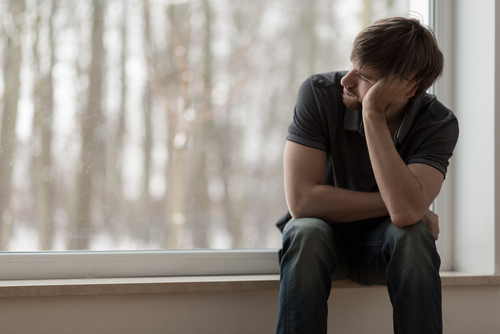This article will discuss the topic of suicide. If you are having thoughts of suicide, this article may be triggering for you. Please call the National Suicide Prevention Lifeline: 1-800-273-8255
Living with opioid use disorder, or more casually referred to as opioid addiction, can be described as living in a nightmare. Opioid addiction causes someone to become extremely ill in mind, body, and spirit. Obsessive thoughts, severe cravings that live in the brain and the body, endless self-destruction for the sake of trying to get high- it’s a relentless cycle of pain and suffering. Commonly, people who are living with an opioid use disorder are also living with a co-occurring mental illness like a mood or personality disorder. Each diagnosis inflates the other, worsening an individual’s addiction, as well as their mental health.
For some, worsening mental health in addition to an opioid use disorder can lead to suicidal thoughts, tendencies, ideations, or action. According to a study published in April of 2018, individuals with opioid use disorder have a high rate of suicide. The study appeared in the New England Journal of Medicine.
Researchers found that individuals who live with chronic pain, as well as individuals who live with mood disorders, are more likely to receive an opioid prescription from a treatment provider. As a result, these individuals are at a greater risk for suicide. Among every 100,000 individuals who are living with opioid use disorder, 87 of those individuals take their life by suicide. That is six times the general population.
Problematically, it isn’t always easy to tell when a loved one is living with an addiction to opioids, or when they are living with thoughts of suicide. If you are concerned about a loved one’s well being, look for signs like:
- Verbal references to suicide which might include statements about not wanting to be born, not wanting to be a live, or wishing to be dead.
- Unusual purchases or change in lifestyle may not always be obvious. However, if someone becomes more interested in dangerous or lethal activities, that can be a sign.
- Withdrawing and isolating is a typical behavior for people who are preparing to make an exit from the world. However, the opposite is also true. People may act as normal or spend more time with others.
- Expressing hopelessness is a strong sign of suicidal thoughts. Listen for a lack of hope or aspiration. If someone has lost their ability to believe in a better future, they may be losing their will to see that future come to fruition.
Let the O’Connor Professional Group take the guesswork out of putting a treatment plan together. Our combined personal and professional experience empowers us to empower you with a private consultation and customized plan of action for getting the help you need. Call us today for information: 617 910-3940

